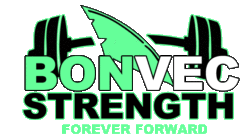 The warm up is the salad of exercise. It’s not very exciting, but you know it’s good for you and you should probably have it before you get to the meat and potatoes.
The warm up is the salad of exercise. It’s not very exciting, but you know it’s good for you and you should probably have it before you get to the meat and potatoes.
Luckily, with the increased popularity of functional training, a thorough dynamic warm up is commonplace in most gyms. But there’s a good chance you’re still making a handful of warm up mistakes. And I’m not talking the obvious ones like doing a couple arm swings and half-ass toe touches.
Here are four common warm up mistakes that even more experienced lifters make:
1. SKIPPING AEROBIC WORK
Back in the day, it seemed like everyone hit the treadmill or the bike for a few minutes before stretching and lifting. Most lifters would scoff at this approach now, but a little bit of aerobic exercise can make the rest of your warm up more effective.
Typically, lifters hop directly on a foam roller first thing when they walk in the gym. The main purpose of foam rolling is to reduce neurological tone in stiff muscles to improve range of motion. This effect is more pronounced when core temperature is elevated and blood flow is increased, neither of which occur with foam rolling alone (at least not when you foam roll each body part for 60 seconds of less, as most people do).
To increase core temperature and blood flow, perform 3-5 minutes of light aerobic exercise before foam rolling. Try sled drags, slow biking or low intensity medicine ball throws.
2. FOAM ROLLING FOR TOO LONG
If a little is good, a lot must be better, right? When it comes to foam rolling, that’s dead wrong.
Perhaps the most common of all warm up mistakes I see lifters make, foam rolling for too long is a colossal waste of time. That’s because, as mentioned, foam rolling “tricks” your nervous system into relaxing muscles that are constantly “on” and need to be toned down. However, you lose this “off” effect a few minutes after you stop foam rolling. You need to foam roll, then mobilize and stabilize that muscle before the effect disappears.
If you’re taking 20-plus minutes to foam roll head to toe, you can bet that all the muscles you foam rolled at the beginning are virtually the same as when you started your warm up. So much for all that smashing and flossing.
Instead, pick a handful of muscle groups that actually need rolling for your given workout, and spend about 30 seconds on each one. Go for intensity instead of duration.
Dr. Quinn Henoch of Juggernaut Training Systems explains some of the physiological mechanisms of foam rolling is this video:
3. AVOIDING STATIC STRETCHING
Static stretching used to be the ONLY way people warmed up. Then we found out that stretching immediately before jumping reduced power output, so everyone avoided stretching like the plague. Big surprise: the answer is somewhere in the middle.
Turns out that static stretching still works for increasing range of motion and any reduction in power is mitigated with any sort of dynamic warm up after stretching and before lifting. In other words, just make sure you do SOMETHING dynamic between stretching and lifting. There’s no need to fear static stretching lest you turn into a slow, weak sloth.
Some chronically stiff muscle groups need more than a couple reps of a mobilization drill to loosen up. Longer duration stretching near end-range accompanied by deep breathing is often necessary to get into the positions required for big exercises like squats and sprinting. Here are my two favorites for the upper body and lower body, respectively.
4. NOT GETTING A PUMP
Old school lifters often swear by getting a big pump in the muscles they’re about to train. While this may fall under the “it feels good so I do it” category, there’s some merit to catching a pump prior to your big lifts.
Taking a muscle through its full range of motion is the only way to bring synovial fluid to the joints. This glorious liquid is necessary to keep joints happy and non-fatiguing high repetition lifting can summon this literal blood bath. The key here is “non-fatiguing,” so don’t be hitting failure sets and forced reps on chest flyes before benching.
I especially like glute ham raises prior to squatting, as it feels like I get some extra support for my knees. Before benching, I like to hit some light pushdowns, curls, face pulls and lateral raises to get my entire upper body feeling warm and pumped.
NO MORE WHACKY WARM UPS
Are you making any of these warm up mistakes? Well, now you know better. Get the blood flowing,foam roll a little (but not too much), stretch as needed, get a pump and get after it.

